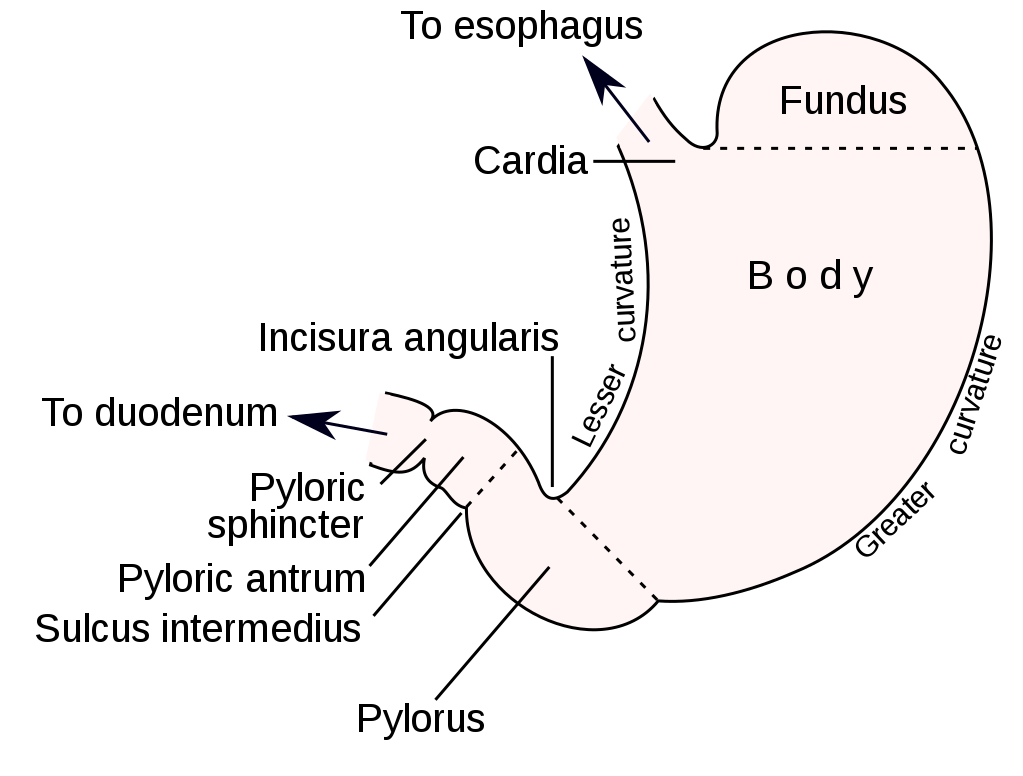Learning anatomy/Stomach, Gaster, or Gastric Region
| This is in the gastrointestinal anatomy chapter. |
Anatomy
[edit | edit source]The stomach is a J-shaped ”bag” that connects the esophagus to the small bowel. The parts of the stomach are the cardiac region, gastric fundus, gastric body, and pyloric region. The pyloric region is made up of the pyloric antrum, and the pyloric canal.

Function
[edit | edit source]The first sphincter of the stomach is the cardiac sphincter or lower esophageal sphincter which guards the entrance to the stomach. If the sphincter weakens, stomach contents can damage the lining of the esophagus and cause acid reflux so, please take care of your lower esophageal sphincter.
The stomach has folds called rugae which look wrinkled when no food is in the stomach. The stomach stores food. If the food is poisonous, it triggers the vomiting reflex. In this case, the body protects itself from the acid. But if it’s not poisonous, the food continues to go. The stomach will make acid, digestive enzymes, and mucin. Hydrochloric acid breaks down all foods into chyme. Amylase breaks down starch. Pepsinogen is the inactive form of pepsin. When pepsinogen reaches the acidic ph of the stomach, it turns into pepsin which digests proteins. Gastric lipase breaks down lipids. Hydrochloric acid in the stomach kills germs. Gastrin and somatostatin are hormones. Gastrin inhibits acid secretion. Somatostatin does a lot of things.


